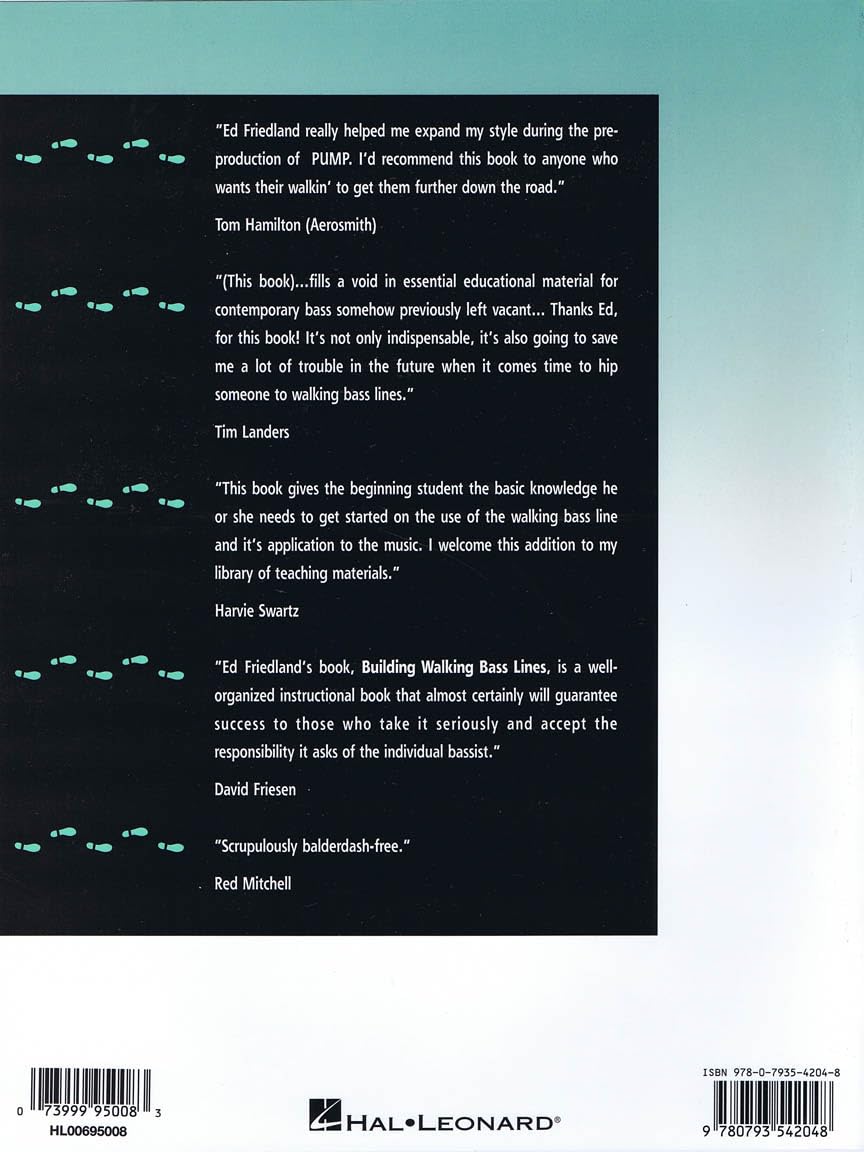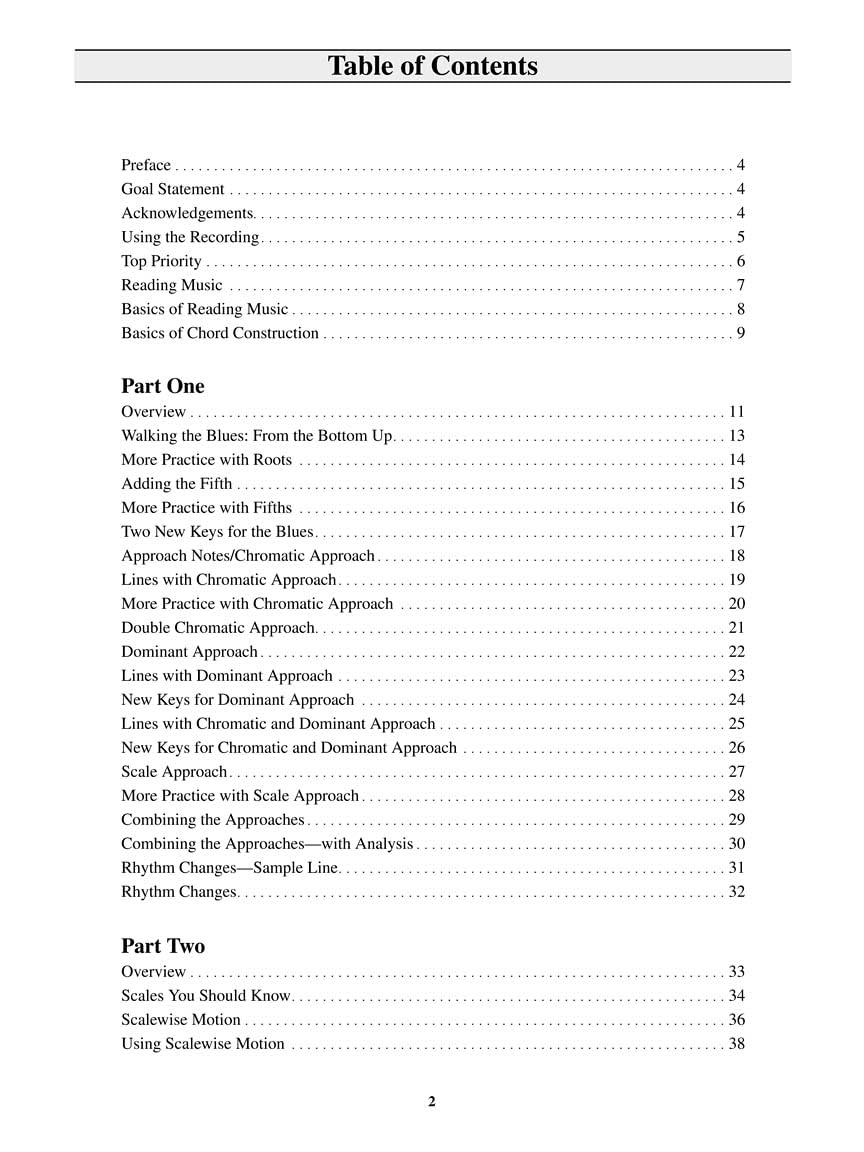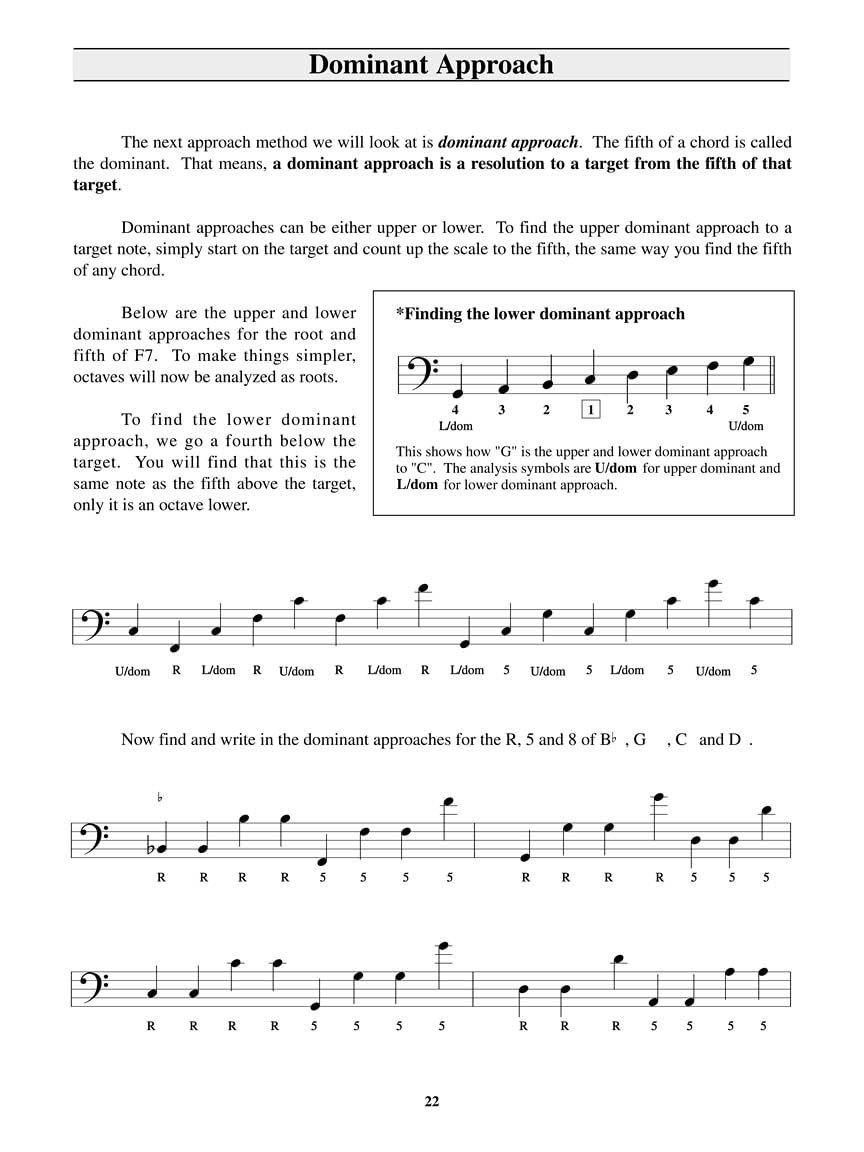





Full description not available
C**S
THE standard for learning walking bass lines
This is by far the most helpful bass book I've ever had. It walks you through the foundations of a walking bass line from very basic root notes through all the possible approaches and variations. You could spend weeks on each page of this book and continue benefitting from it each day. This is a thin book that's rich with material. There's so much depth, and it's communicated simply and directly without any unnecessary sentences or diagrams. Every ounce of this book is dripping with value.Don't worry if you can't read standard notation. It starts off extremely simple. There are chord symbols and patterns described so you'll be able to figure out what notes to hit. Besides, it's not about playing exactly what the examples show on your first attempt (which tabs would allow you to do), it's about building up skills and techniques that you can apply yourself in improvising walking bass lines. Think of it as a benefit - you're guaranteed to come away from this book knowing a little more about how to read sheet music.Overall, I highly recommend this book, whether you're trying to learn walking bass for jazz or just trying to expand your capabilities on bass.
E**R
Useful even if you can't read music
I have only been playing bass for about 6 months, and I wanted to expand my playing ability. I searched inside this book on Amazon, and was primarily convinced to buy it for the CD.I play by ear so I got anxious when I opened the book...I can't read music and don't really care to. I know what notes the open strings are, as well as a few other scattered notes, but that's about it.That said, I played the CD and went through a few of the exercises. I found it helpful to look at the book while the CD is playing...just to get a better handle on each progression. The book is really straightforward and isn't diluted by lengthy descriptions/instructions for each segment.The progressions are taught in jazz (and are slow enough to be accommodating but not so slow that they're insulting). If you're looking to get better at jazz bass, this is a great book. It still can be helpful in other genres, since the basic premise is identifying logical note patterns--it's just handed to you on a jazz plate.Even without the book, the CD alone is worth it. The piano and drums are on the right channel and the bass is on the left, so you can totally cut out the bass if you want to play undistracted. There are 55 tracks to learn from and build upon.I'd say this is a must for anyone who is new to the bass, and I would think that even seasoned bass players could come away with a few new ideas from this book and CD.
T**R
An Excellent Book for the Beginner or Intermediate Player
When I first purchased Building Walking Bass Lines, I knew how to read notes in the lower five frets of the bass, and played bass at a high beginner's level. I'm also a full-time college teacher (business), so I know solid teaching of any kind when I see it.Unlike other books on walking bass lines I'd tried to learn from, this book got me walking over chord changes quickly and fluidly, and with a minimum amount of pain.Friedland gives a brief overview of how to read notes on the electric bass, briefly discusses how to construct chords, and then launches into the clearest and most gradual explanation of how to walk over chord changes I've ever seen. He has a lot of "hands-on", play-along exercises at the end of each concept, and they're stripped of unecessary complexity so you can see the concepts clearly.A major strength of this book is how you see results in your playing immediately, which encourages you to keep practicing. It's important for anyone learning something for the first time to see immediate progress in their ability, and Friedland has written this book to achieve just that.The exercises get more and more difficult as you go along, but were never out of reach for me. The end of the book gives the chord changes to 10 jazz standards.After working through this book, I knew enough to hold my own in a gigging fusion band with some ex-music teachers and university graduates in music.Also, I found the concepts I learned in the this book made me a better rock and folk player, because I understood how to construct interesting bass lines under chords in any style -- all this was an outgrowth of my jazz knowledge gained from the book.Anyone who writes that this book is "too easy" or "too basic" is actually complementing Friedland, because it takes a master to dissect a complex topic into something everyone can understand.
Trustpilot
2 months ago
1 week ago
1 day ago
1 month ago